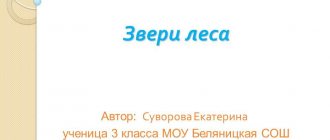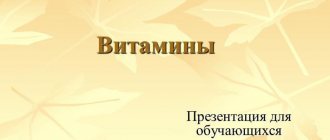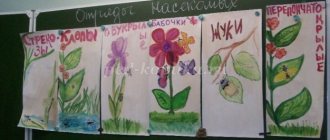Let's discuss!
What cases do you know of people’s irresponsible attitude towards the surface of their region? Is it possible to compensate for the damage caused to nature in these cases? How to do it?
I saw an old abandoned quarry where gravel used to be mined. They began to use it as a garbage dump. This was a completely irresponsible attitude towards the surface of the edge. But now they are trying to fill up this quarry, the garbage has been taken out, there are signs everywhere prohibiting dumping of garbage. I hope that over time a new grove will appear on the site of this quarry.
check yourself
Tell us about the surface of your edge.
In my region there are plains, flat and hilly, there are swamps, rivers, small lakes. We have low mountains and many hills. There are ravines and gullies. There are old quarries where the gravel was mined.
How is the surface used in your area?
The surface of the region is used for agricultural fields, pastures, forests, and for the construction of cities, towns, and roads.
What does it mean to “guard the surface”?
To protect the surface means to ensure that human activity does not damage the surface of the edge, does not spoil or disfigure its beauty. Make sure that no new ravines appear.
How can schoolchildren take part in protecting the surface of their region?
Schoolchildren can also help protect the surface of their region. For example, during a walk or excursion they may come across a pothole, an abandoned quarry, an illegal dump, and report this to the teacher or the environmental protection society.
Presentation for a lesson on the surrounding world in 1st grade. What is Motherland?
Explanatory note
Author of the development
: Kadyrova Olga Igorevna, primary school teacher, MAOU secondary school No. 52, Tyumen
UMK:
"School of Russia"
Class:
1a
Item
: the world
Lesson topic:
What is Motherland?
Lesson type:
Lesson for the initial presentation of new knowledge.
Lesson duration:
35 minutes
The target audience:
1st grade students, the audience is psychologically homogeneous, the level of development is average.
Textbook:
A.A. Pleshakov, part 1, M.: Education, 2020
Workbook:
A.A. Pleshakov, part 1, M.: Education, 2020
Chapter:
introduction, the curriculum provides 2 hours per week, 66 hours per year.
Author's media product:
presentation on the topic
Necessary technical means and materials for conducting the lesson:
Multimedia projector, computer, screen
Methods and techniques:
reproductive, interactive, problematic, dialogical, playful, research
.
Student activities:
frontal, steam room, individual survey
.
Technologies:
ICT, person-oriented, health-saving.
Subject UUD:
will learn
distinguish Russian state symbols from symbols of other countries, compose text based on the picture. They will consolidate knowledge about the state symbols of Russia (flag, anthem, coat of arms); They will talk about their hometown.
Metasubject UUD:
Regulatory:
use speech to regulate your actions.
Cognitive:
use sign-symbolic means; summarize the concept on the basis of object recognition, highlighting essential features (national costume: color, ornament, etc.).
Communicative:
formulate your own opinion and position; agree on the distribution of functions and roles in joint activities.
Personal UUD:
Civil identity in the form of awareness of “I” as a citizen of Russia, a sense of belonging and pride in one’s Motherland, people and history, awareness of one’s ethnicity, humanistic and democratic values of a multinational Russian society.
The pictures used for the presentation are freely available in the Yandex or Google search engines.
Lesson 2. What is Rodina PPTX / 52.25 MB
Homework assignments
Write it in the dictionary: ravine, beam.
A ravine is a depression in the surface of the earth with steep, crumbling slopes.
Balka is an old ravine overgrown with vegetation with gentle slopes.
Draw what the surface of your edge looks like. You can sculpt a model of some part of it (hill, ravine, mountain range) from plasticine, clay or raw sand.
If there is a ravine in your area, ask adults how long it has existed, how it has changed during this time, and what people are doing to stop its growth. Think about how you can help adults.
Not far from our city there is a large Ravine that has been growing there for many decades. It threatens to affect farmers' fields, and local residents are seeking to stop the ravine's growth. They plant bushes and trees along the edges of the ravine and fill the ravine.
Lesson No. 23. “The surface of our region”
Film manual for lesson development “The World Around us” 4th grade
Lesson type:
combined
Target
— formation of a holistic picture of the world and awareness of man’s place in it based on the unity of rational-scientific knowledge and the child’s emotional and value-based understanding of his personal experience of communicating with people and nature;
Characteristics of student activities
Understand
educational objectives of the lesson, strive to fulfill them.
Describe
based on your observations of the shape of the earth's surface of your native land,
find
on the map of the region the main forms of the earth's surface, large ravines and gullies,
extract
information about the surface of the region from local history literature.
Discuss measures
to protect the surface of your region.
Formulate
conclusions from the material studied,
answer
final questions and
evaluate
achievements in the lesson.
Planned results
Subject
Know
the concepts of “ravine”, “beam”.
Be able to
show mountains, plains, rivers on a map, globe, distinguish between natural objects and products, objects of living and inanimate nature.
Meta-subject ( Regulatory. Cognitive. Communicative)
P. – construct messages orally, analyze objects highlighting essential and non-essential features.
R. – take into account the action guidelines identified by the teacher in the new educational material in collaboration with the teacher. Learn to express your guess.
K. – ask questions, seek help.
Personal results
A feeling of love for one's country, expressed in interest in its nature.
Cooperation skills in different situations, the ability to avoid creating conflicts and find a way out of controversial situations.
Basic concepts and definitions
"ravine", "beam".
Preparing to learn new material
Based on your observations, as well as using a map of the region and local history literature, describe the main forms of the earth’s surface in your region. Don't forget that plains can be flat or hilly, and mountains can be of different heights.
Learning new material
You already know that there are ravines on the plains.
They have steep, crumbling slopes. There are usually almost no plants on the slopes of ravines
The formation of a ravine begins with a small pothole on the surface of the soil. Streams of melt and rainwater erode it, and therefore the ravine gradually increases in size. At the same time, it destroys large areas of fertile soil.
Over time (after many years), the slopes of the ravine become gentle and overgrown with grass, shrubs, and trees. The ravine stops growing. So it turns into a beam.
A beam is a depression with gentle slopes covered with plants.
Beam
If you saw a ravine during the excursion, tell us about it. Are there many ravines in your area? Are there beams in your area? Tell us about the one you saw on the excursion.
Comprehension and understanding of acquired knowledge
Think about where it is easier to build cities, villages, lay roads, cultivate the land - on the plain or in the mountains. How do people use the surface in your area?
DO YOU NEED TO PROTECT... THE SURFACE?
This question may seem strange. It is necessary to protect plants, animals, clean air and water. And what about the surface of the edge?.. Is there any threat to it? Let's speculate.
During your excursions, you probably noticed the beauty of the surrounding area. How do you feel when you go out into an open place where you can see far away? You probably feel joy and pride for your native land. How beautiful she is!
But it also happens that instead of these feelings you experience bitterness and resentment. For example, at an abandoned quarry. Once upon a time sand, clay or coal were mined here. Now the quarry is a wound on the surface of the earth. But people had to fill it up and plant a forest in this place or turn the quarry into a fish pond.
And in another place, builders erected new houses and left a large landfill. There are broken bricks, shards of glass, and much more. The people who worked at this construction site violated the law, which prohibits throwing garbage anywhere. And how many such landfills disfigure the surface of our earth!
A tractor driver is not acting like a business owner if he plows the ground on a slope so that the furrows go down along the slope. Streams of water will flow along these furrows after the first rain - this is the beginning of the ravine! Plowing can only be done across slopes. And steep slopes cannot be plowed at all.
To stop the formation of a ravine, small potholes are buried and grass is sown in this place. Low fences made of willow stakes and twigs are placed across a small ravine. Over time, the stakes will take root, and a reliable living barrier will form for water flows. Trees and shrubs are planted along the edges and slopes of the ravine.
Correct and incorrect plowing of slopes
You too can participate in protecting the surface of your region. Explore the surroundings of the city and village together with adults. If you find an abandoned quarry, an illegal dump, plowing along the slopes, or a pothole that can turn into a ravine, report it to the Nature Conservation Society. Take part in garbage collection, in the fight against ravines
So it turns out that the earth’s surface must be protected no less carefully than water and air, plants and animals.
Let's discuss!
What cases do you know of people’s irresponsible attitude towards the surface of their region? Is it possible to compensate for the damage caused to nature in these cases? How to do it?
Independent application of knowledge
check yourself
1.Tell me about the surface of your edge. 2. How is the surface used in your area? 3. What does it mean to “protect the surface”? 4. How can schoolchildren take part in protecting the surface of their region?
Mountains that shouldn't exist
In some areas of our country, where many minerals are mined from the depths of the earth, mountains have grown - waste heaps. They did not grow by themselves, people poured them in. When extracting minerals and processing them, they dumped all the waste—waste rock—in heaps. The heaps grew and grew... And it turned out that people, living on the plain, ended up... in the mountains.
Terricons are not at all harmless. After all, under them were huge areas of fertile land, taken away from agriculture. The waste heaps themselves spread clouds of dust around themselves, which pollutes the air. It happens that waste heaps catch fire, spreading acrid smoke. And the polluted water flowing from them after rains poisons the soil and water bodies.
People are fighting waste heaps. Somewhere they are leveled, soil is brought in and plants are planted. In some places they have learned to extract valuable substances from waste heap rock. So the mountains created by people are gradually disappearing.
Yes, these mountains did not exist before. We must try very hard to ensure that they do not remain in the future.
Terricons
Conclusion
When doing housework, people use... the top of its edge. This must be done carefully so as not to disturb the beauty of our native land and to prevent the formation of ravines and illegal landfills.
Homework assignments
1. Write in the dictionary: ravine, beam.
2.Draw what the surface of your edge looks like. You can sculpt a model of some part of it (hill, ravine, mountain range) from plasticine, clay or raw sand.
3. If there is a ravine in your area, ask adults how long it has existed, how it has changed during this time, what people are doing to stop its growth. Think about how you can help adults.
Kirov :
Secrets Vyatka
Land Vyatka
ravines
Razderikhinsky
ravine
Treasures
of Vyatka - Podchurshinsky settlement
Ancient
dumps and waste heaps of Bashkiria
Planet Earth a giant mined-out quarry?
Information sources
:
A. A. Pleshakov textbook, workbook The world around us, grade 3 Moscow
"Enlightenment" 2014
YouTube
website : https://www.youtube.com/
Hosting of presentations
around the world
- https://ppt4web.ru/nachalnaja-shkola/prezentacija-k-uroku-okruzhajushhego-mira-vo-klasse-chto-takoe-ehkonomika.html








